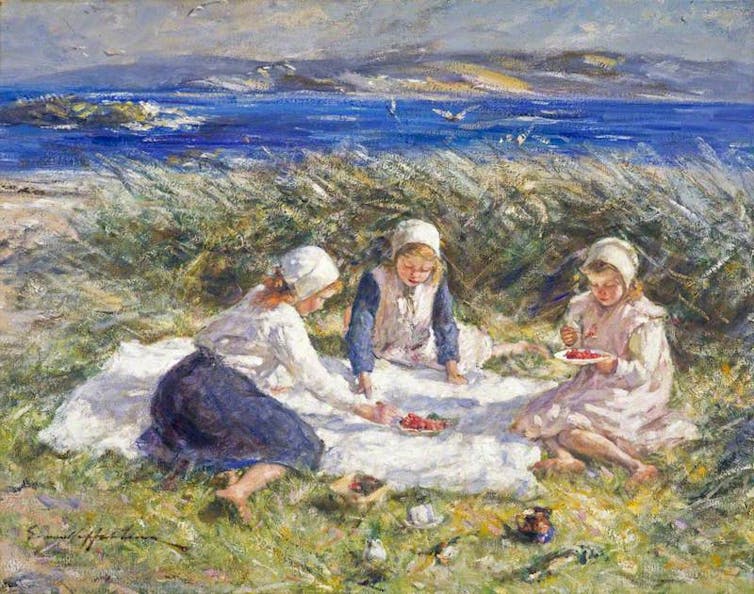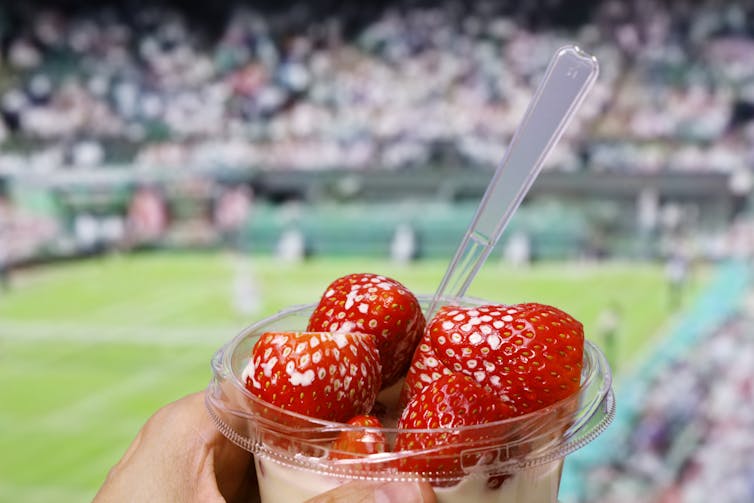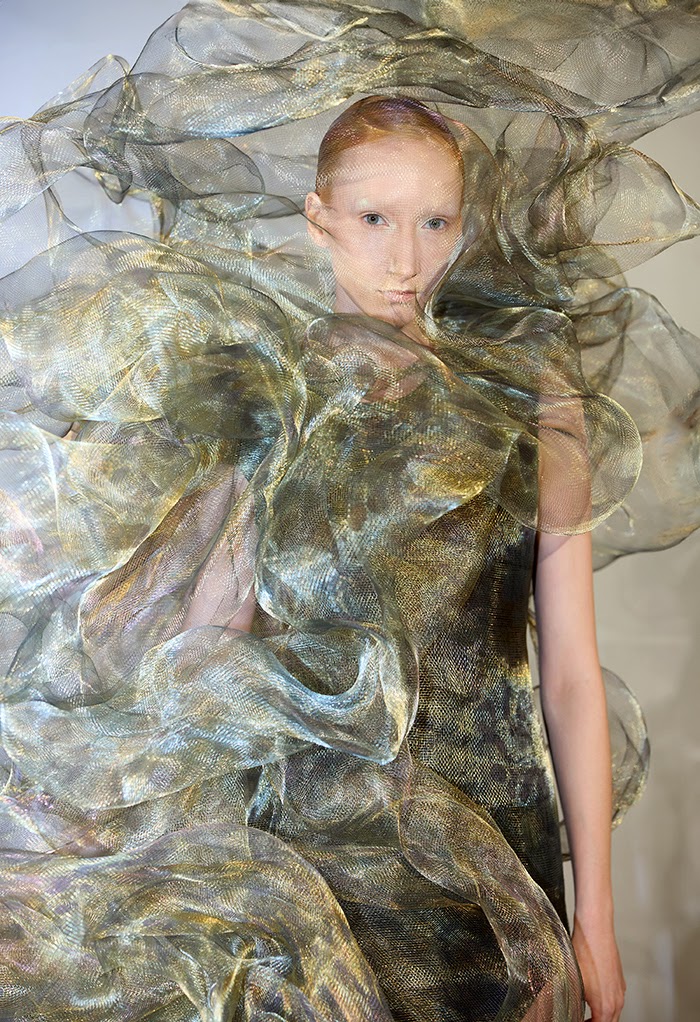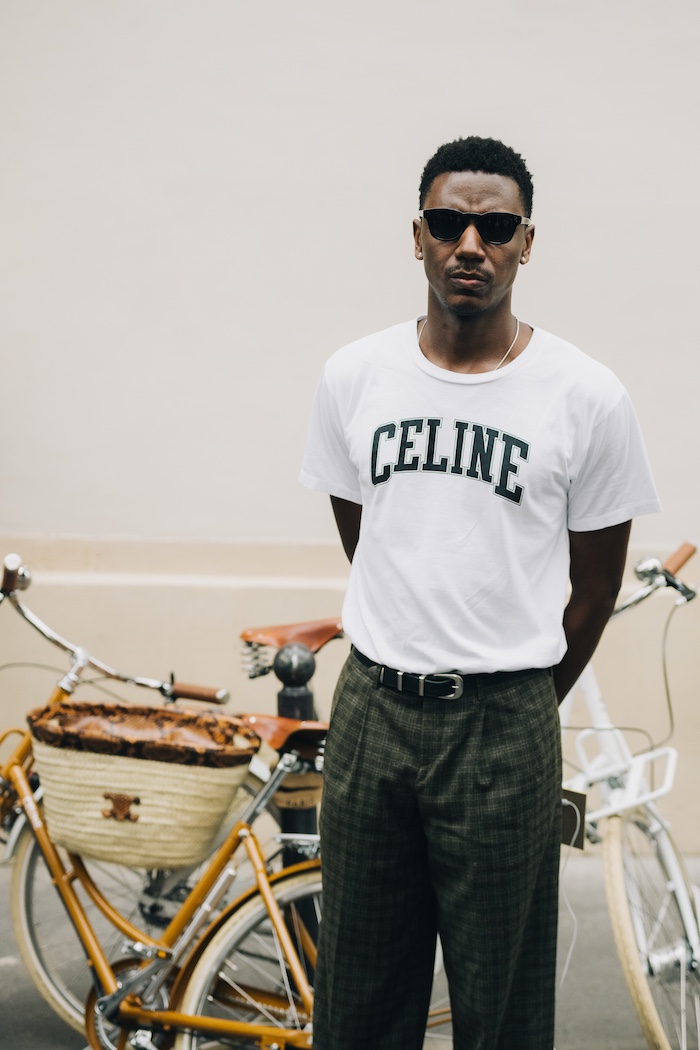 |
| Ceramic sculptural "armour" was a metaphor for the fragility of human life especially in glacial temperatures. Photograph (above) by Andrea Heinsohn and cover picture by Jay Zoo for DAM. |
Yuima Nakazato's new haute couture collection Glacier drew on themes of human vulnerability, protection, and transformation. The Japanese designer combined delicate ceramic elements, sculptural tailoring, and sustainable materials to explore exposure and concealment. Inspired by a journey to the frozen landscapes of northern Finland, he reflected on the body’s dependence on clothing, not only for warmth and safety, but as a language of identity and resistance. The result was a thoughtful and visually arresting meditation on the origins of dress and its enduring relevance in an uncertain world. Story by Jeanne-Marie Cilento. Photography by Andrea Heinsohn and Jay Zoo.
 |
The fluidity of sea-coloured voluminous fabrics contrast with fine, sleek tailoring. Photograph: Jay Zoo |
Through fractured ceramics, concealed faces, and the delicate force of hand-crafted forms, he presented a hauntingly beautiful vision of what it means to be fragile, and why that very fragility might be our greatest strength.
“In the beginning of the collection, it is important for me to travel to get inspiration,” Nakazato said. “Travelling and feeling different environments, to see how people are living there and the relationship between nature and the human body.”
This season, the genesis of the collection lay not in the atelier but in the frozen wilderness of Finnish Lapland. There, in temperatures well below freezing, Nakazato collaborated with contemporary dancer and artist Evgeny Ganeev on a nude photoshoot. “I travelled to Northern Finland this time together with the dancer. He took off his clothing in this cold environment. Without protection, surviving is very difficult. So, taking off the garments lets people recognize how important garments are for the human body. That’s what I wanted to express.”
“At the beginning of a collection, it is important to travel, to get inspiration, feel different places, see how people live and the relationship between nature and the human body”
 |
Nakazato's fragile, chainmail armour made from ceramics. Photograph: Jay Zoo |
Long jackets and columnar gowns bearing giant photographic prints of Ganeev’s hands, positioned as an act of remembrance, a protective gesture against oblivion. Created with Nakazato’s signature precision, many of the designs were cut on diagonals or overlapping vest-like panels, suggestive of both deconstruction and protection.
But it was the "fragile armour" that carried Nakazato’s message most powerfully. A chain-mail-inspired dress clinked softly with every step, its metallic surface glinting like weathered silvery gold.
“It looks like metal armour,” Nakazato explained, “but actually it is made from ceramics. So, it is a very sensitive material, easy to break. You can’t fight using this, which is the whole point.”
In this layering of contradiction, hard and soft, protective and vulnerable, Nakazato offers a complex portrait of the human condition. Masks, too, became part of this armour. Ceramic face coverings concealed the identity of the wearer while revealing something deeper about the need for protection. “In a time of facial recognition and AI image generation, revealing one’s face is a form of deep vulnerability,” he said. For Nakazato, covering the face is not about hiding, but resisting.
“In a time of facial recognition and AI image generation, revealing one’s face is a form of deep vulnerability”
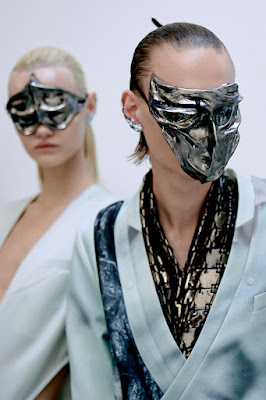 |
The designer's masks are not about hiding, but resisting the invasions of technology. Photograph: Jay Zoo |
By combining the softness of yarn with the weight and rigidity of metal, Nakazato aligned traditional femininity with quiet rebellion. “So protective and unprotective is the meaning of this collection,” he said. “A conflation of opposite meanings.”
Sustainability remained at the heart of Nakazato’s vision. “It is not new,” he noted, “but we are continuously using the digital print dry fibre technology, upcycling with the Kenyan second-hand clothes. Three years ago I travelled to Kenya and brought the second-hand clothes back to Japan, and we are still using those materials.”
He also continues to work with Spiber's Brewed Protein material: “The black and white parts of the garments all use brewed protein. Almost every look has that material.”
The collection's hues ~ ghostly whites, glacial greys, and iridescent transparencies with dashes of brilliant sea greens and blues ~ were drawn from the Arctic terrain. Some fabrics rippled like river ice; others layered like gills or cracked porcelain. The silhouettes, skeletal, aquatic, alien, seemed not so much worn as grown.
“It is very difficult to continue couture brands. But I believe in craftsmanship. This is not mass production. I think couture is not just for five or ten years, but forever"
 |
Yuima Nakazato pours black ink over the white-enveloped dancer. Photograph: Andrea Heinsohn |
As the ink spread, Ganeev twisted on the ground, embodying transformation through pain. He rose at last, trailing strips of now-stained cloth that mirrored the torn and floating elements of the garments.
“It is very difficult to continue couture brands,” Nakazato admitted. “But I believe in craftsmanship. This is not mass production. Hand crafting is very important. I think couture is not just for five or ten years, but forever. So, to continue is important.”
By revisiting the birth of clothing, when humanity first clothed itself against nature’s indifference, Nakazato has reframed couture as something vital. Not a luxury, but a language. Not a performance, but a plea. In confronting fragility so honestly, through ceramics that fracture, through masks that shield, through hands that knit, Yuima Nakazato reminds us that protection begins with the recognition of what we stand to lose. And that clothing, in its purest form, still carries the power to help us survive.
Scroll down to see more highlights from Yuima Nakazato's collection by Andrea Heinsohn & Jay Zoo
 |
| Yuima Nakazato, Glacier, Autumn-Winter 2025/2026, Paris Haute Couture. Photograph: Jay Zoo |
 |
| Yuima Nakazato, Glacier, Autumn-Winter 2025/2026, Paris Haute Couture. Photograph: Andrea Heinsohn |
 |
| Yuima Nakazato, Glacier, Autumn-Winter 2025/2026, Paris Haute Couture. Photograph: Jay Zoo |
 |
| Yuima Nakazato, Glacier, Autumn-Winter 2025/2026, Paris Haute Couture. Photograph: Jay Zoo |
 |
| Yuima Nakazato, Glacier, Autumn-Winter 2025/2026, Paris Haute Couture. Photograph: Andrea Heinsohn |
 |
| Yuima Nakazato, Glacier, Autumn-Winter 2025/2026, Paris Haute Couture. Photograph: Jay Zoo |
 |
| Yuima Nakazato, Glacier, Autumn-Winter 2025/2026, Paris Haute Couture. Photograph: Andrea Heinsohn |
 |
| Yuima Nakazato, Glacier, Autumn-Winter 2025/2026, Paris Haute Couture. Photograph: Jay Zoo |
 |
| Yuima Nakazato, Glacier, Autumn-Winter 2025/2026, Paris Haute Couture. Photograph: Jay Zoo |
 |
| Yuima Nakazato, Glacier, Autumn-Winter 2025/2026, Paris Haute Couture. Photograph; Jay Zoo |
 |
| Yuima Nakazato, Glacier, Autumn-Winter 2025/2026, Paris Haute Couture. Photograph: Jay Zoo |
 |
| Yuima Nakazato, Glacier, Autumn-Winter 2025/2026, Paris Haute Couture. Photograph: Jay Zoo |
 |
| Yuima Nakazato, Glacier, Autumn-Winter 2025/2026, Paris Haute Couture. Photograph: Andrea Heinsohn |
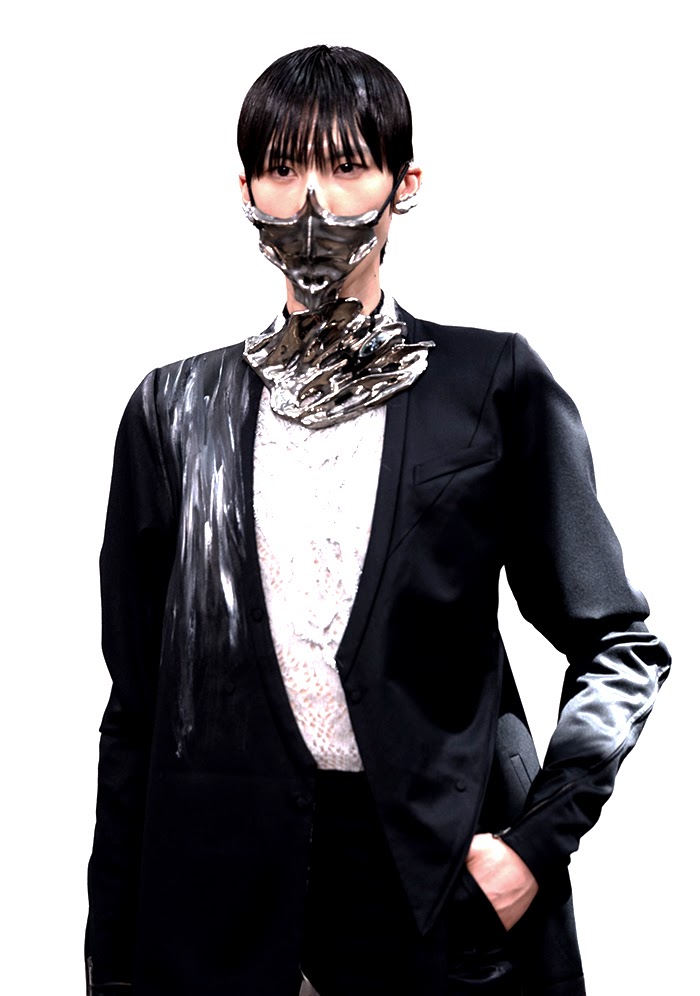 |
| Yuima Nakazato, Glacier, Autumn-Winter 2025/2026, Paris Haute Couture. Photograph: Andrea Heinsohn |
 |
| Yuima Nakazato, Glacier, Autumn-Winter 2025/2026, Paris Haute Couture. Photograph: Andrea Heinsohn |
 |
| Yuima Nakazato, Glacier, Autumn-Winter 2025/2026, Paris Haute Couture. Photograph: Andrea Heinsohn |
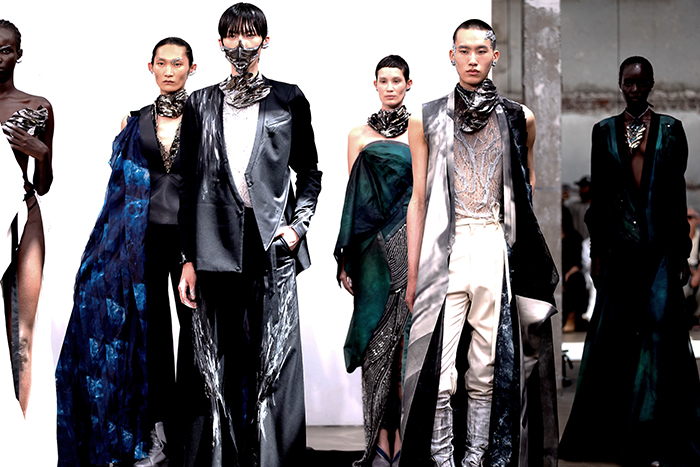 |
| Yuima Nakazato, Glacier, Autumn-Winter 2025/2026, Paris Haute Couture. Photograph: Andrea Heinsohn |
 |
| Yuima Nakazato, Glacier, Autumn-Winter, 2025/2026, Paris Haute Couture. Photograph: Jay Zoo |
 |
| Yuima Nakazato, Glacier, Autumn-Winter 2025/2026, Paris Haute Couture. Photograph: Jay Zoo |
 |
| Yuima Nakazato, Glacier, Autumn-Winter 2025/2026, Paris Haute Couture. Photograph: Andrea Heinsohn |




